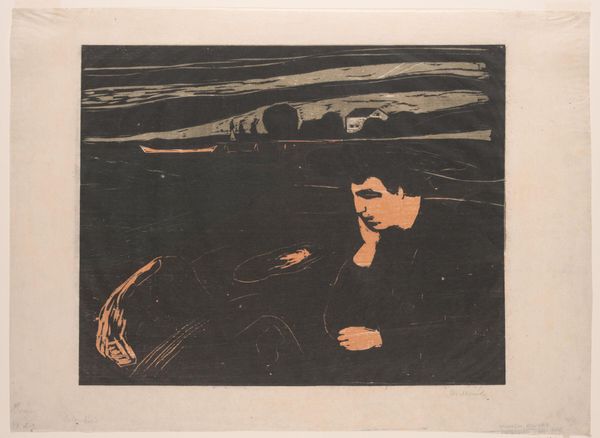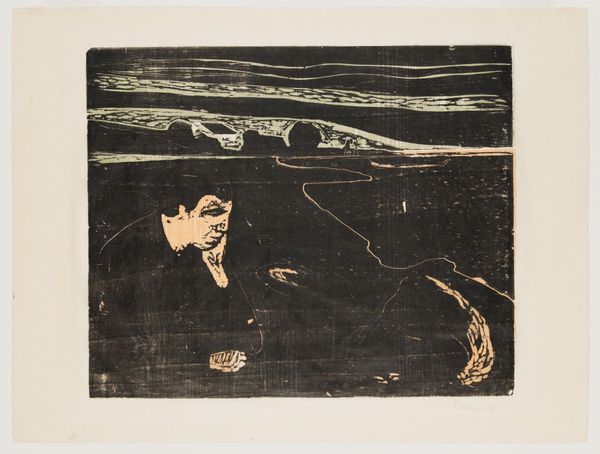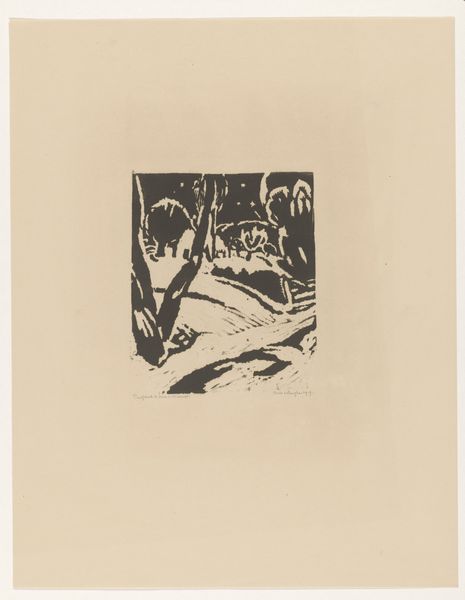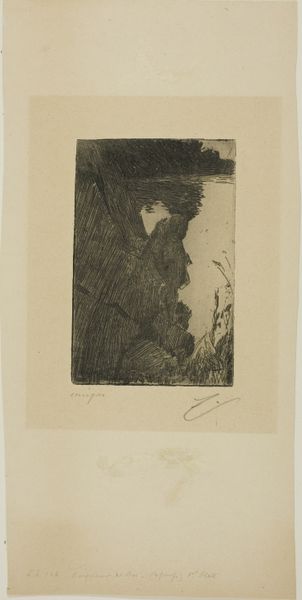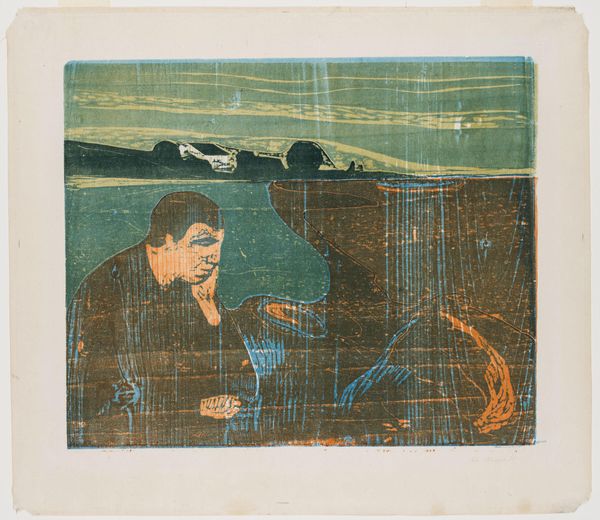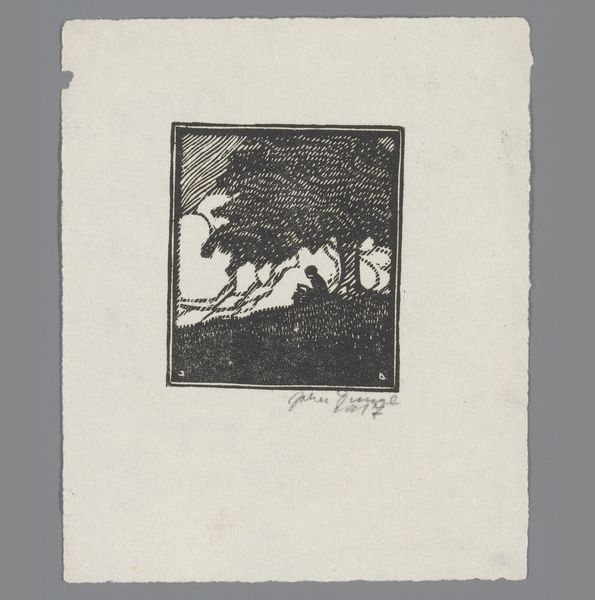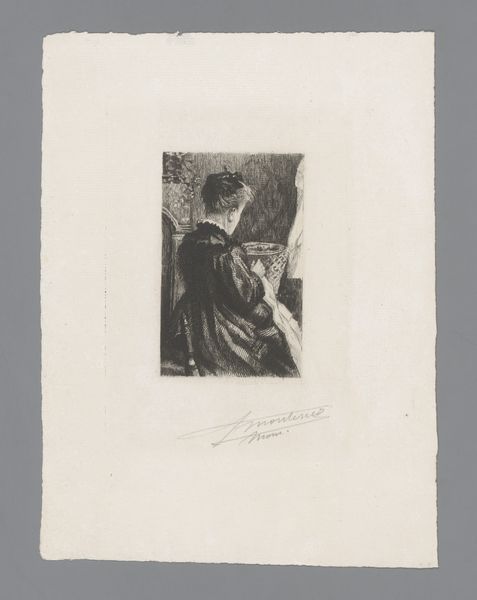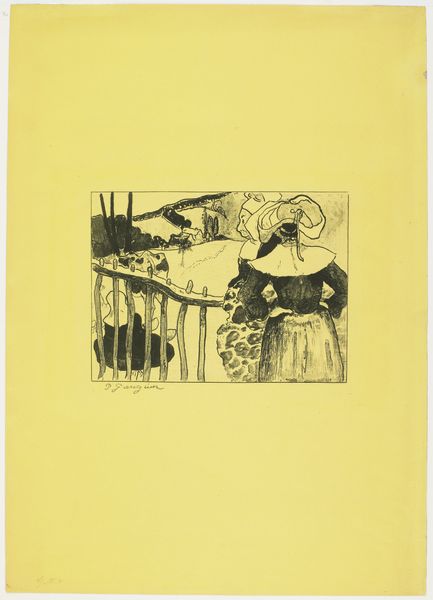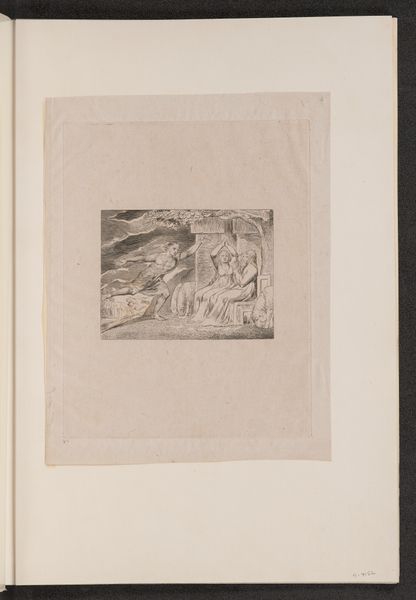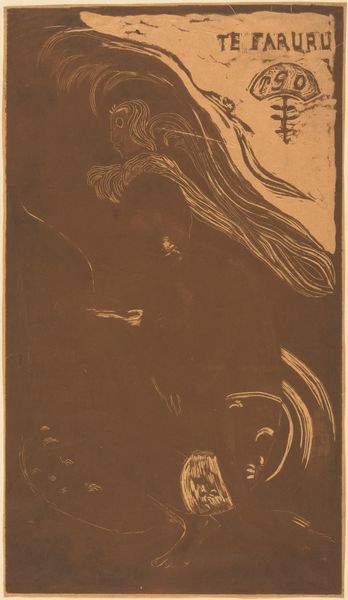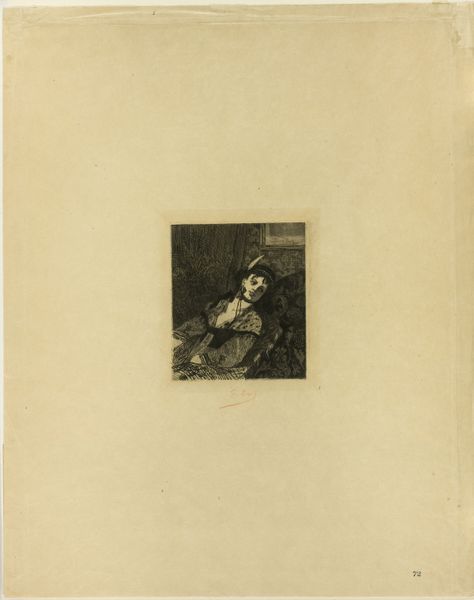
print, woodcut
# print
#
landscape
#
figuration
#
dark colour palette
#
expressionism
#
woodcut
#
monochrome
Dimensions: 748 mm (height) x 642 mm (width) (bladmaal)
Curator: Today we’re looking at Edvard Munch's “Aften. Ved stranden (Melankoli)”, or “Evening. By the beach (Melancholy)” from 1901. This somber work is a woodcut print, characteristic of his Expressionist style. Editor: The mood hits immediately—heavy, isolating. That dense black ink dominating the frame, the stark simplification of forms... It’s profoundly unsettling. Curator: Yes, the woodcut technique lends itself perfectly to this atmosphere. Notice how the broad, rough cuts define the landscape and the figure, abstracting them to emphasize form over realistic detail. The negative space is just as crucial, creating a tangible tension. Editor: That figure…his posture is almost archetypal. Head in hand, a universal pose for sorrow. And the background is evocative; a shoreline suggesting a boundary, perhaps between waking and dreaming, or even life and death. Curator: It echoes themes Munch explored throughout his career—anxiety, love, death. Consider the cyclical nature of water itself, a potent symbol. Munch expertly orchestrates these graphic forms, juxtaposing light and darkness, to create what we can fairly call a visual manifestation of existential angst. Editor: Looking closer, the stark contrast feels deliberately chosen to represent conflict, or perhaps the duality present in the figure's own thoughts, creating a dramatic, yet isolating experience. Curator: Exactly. And that emotional landscape he creates, with such deliberate artistic economy… it stays with you. Editor: Definitely an intriguing distillation of a universal human emotion through form and symbol. The melancholy truly reverberates.
Comments
No comments
Be the first to comment and join the conversation on the ultimate creative platform.

